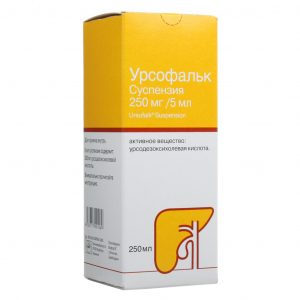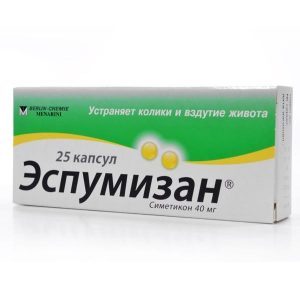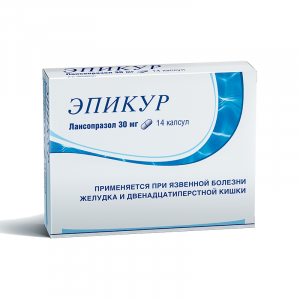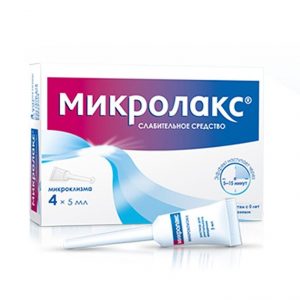Description
Latin name
RABEPRAZOLE
Release form
Hard gelatin capsules No. 3, white case with a dark red cap (for a dosage of 10 mg) hard gelatin capsules No. 1, yellow body with a brown cap (for a dosage of 20 mg). The contents of the capsules are spherical pellets from almost white to white with a creamy or yellowish tint.
Packing
Enteric 20 mg capsule.
Pharmacological action of
Pharmacotherapeutic group
Means of lowering the secretion of the glands of the stomach – proton pump inhibitor
ATX code: [A02BC04]
Pharmacological properties of
Pharmacodynamics
Rabeprazole benzodizam class. It inhibits the secretion of gastric juice by specific inhibition of H + / K + -ATPase on the secretory surface of parietal cells of the stomach. It blocks the final stage of hydrochloric acid secretion, reducing the content of basal and stimulated secretion, regardless of the nature of the stimulus. Possessing high lipophilicity, it easily penetrates into the parietal cells of the stomach, concentrates in them, providing a cytoprotective effect and increasing the secretion of bicarbonate. The antisecretory effect after oral administration of 20 mg of rabeprazole occurs within 1 hour and reaches a maximum after 2-4 hours inhibition of basal and food-stimulated acid secretion 23 hours after the first dose is 62 and 82%, respectively, and lasts up to 48 hours. When you stop taking secretory activity is restored within 1-2 days. During the first 2-8 weeks of rabeprazole therapy, the concentration of gastrin in the blood plasma increases (which is a reflection of the inhibitory effect on the secretion of hydrochloric acid) and returns to its original levels 1-2 weeks after its cancellation. Rabeprazole does not have anticholinergic properties, does not affect the central nervous system (CNS), the cardiovascular and respiratory systems. Against the background of taking rabeprazole, no stable changes were found in the morphological structure of enterochromaphine-like cells, in the degree of gastritis, in the frequency of atrophic gastritis, intestinal metaplasia, or the spread of Helicobacter pylori infection. 3
Pharmacokinetics
Absorption of
Rabeprazole is rapidly absorbed from the intestine, and its maximum plasma concentration is reached approximately 3.5 hours after a dose of 20 mg. The change in the maximum plasma concentrations (Cmax) and the area under the concentration-time curve (AUC) of rabeprazole are linear in the dose range from 10 to 40 mg. The absolute bioavailability after oral administration of 20 mg (compared with intravenous administration) is about 52%. In addition, bioavailability does not change with multiple doses of rabeprazole. In healthy volunteers, the plasma half-life is about 1 hour (varying from 0.7 to 1.5 hours), and the total clearance is 3.8 ml / min / kg. In patients with chronic liver damage, the AUC is doubled compared with healthy volunteers, which indicates a decrease in the metabolism of the first passage, and the half-life from plasma is increased by 2 to 3 times. Neither the time of taking the drug during the day, nor antacids affect the absorption of rabeprazole. Taking the drug with fatty foods slows down the absorption of rabeprazole for 4 hours or more, however, neither Cmax nor the degree of absorption change.
Distribution of
In humans, the degree of binding of rabeprazole to plasma proteins is about 97%.
Metabolism and excretion of
In healthy people
After administration of a single oral dose of 20 mg of 14C-labeled rabeprazole, no unchanged drug was found in the urine. About 90% of rabeprazole is excreted in the urine mainly in the form of two metabolites: a conjugate of mercapturic acid (M5) and carboxylic acid (M6), as well as in the form of two unknown metabolites identified during toxicological analysis. The rest of the taken rabeprazole is excreted in the feces. The total elimination is 99.8%. These data indicate a small excretion of rabeprazole metabolites with bile. The main metabolite is thioether (M1). The only active metabolite is desmethyl (M3), however, it was observed in low concentration in only one study participant after taking 80 mg of rabeprazole.
End-stage renal failure
In patients with stable end-stage renal failure who require maintenance hemodialysis (creatinine clearance <5 ml / min / 1.73 m2), rabeprazole excretion is similar to that for healthy volunteers. AUC and Cmax in these patients were approximately 35% lower than in healthy volunteers. On average, the half-life of 4 rabeprazole was 0.82 hours in healthy volunteers, 0.95 hours in patients during hemodialysis, and 3.6 hours after hemodialysis. The clearance of the drug in patients with kidney diseases requiring hemodialysis was approximately two times higher than in healthy volunteers. Chronic compensated cirrhosis Patients with chronic compensated cirrhosis of the liver tolerate rabeprazole in a dose of 20 mg once a day, although AUC is doubled and Cmax is increased by 50% compared with healthy volunteers of the corresponding gender. Elderly patients In older patients, elimination of rabeprazole is somewhat delayed. After 7 days of taking rabeprazole at 20 mg per day in elderly patients, the AUC was approximately twice as large, and Cmax increased by 60% compared to young healthy volunteers. However, no evidence of cumulation of rabeprazole was noted. CYP2C19 polymorphism In patients with a slow metabolism of CYP2C19 after 7 days of taking rabeprazole at a dose of 20 mg per day, AUC increases by 1.9 times, and the half-life by 1.6 times compared with the same parameters for fast metabolizers , while Cmax increases by 40%. Indications – Peptic ulcer in the exacerbation stage and anastomosis ulcer – peptic ulcer of the duodenum in the exacerbation stage – erosive and peptic ulcer gastroesophageal reflux disease – 12 years old and others gastroesophageal reflux disease – non-erosive gastroesophageal reflux disease – Zollinger-Ellison syndrome and other conditions characterized by pathological hypersecretion – in combination with appropriate an effective antibacterial therapy for eradication of Helicobacter pylori in patients with peptic ulcer. Contraindications – Hypersensitivity to rabeprazole, substituted benzimidazoles or to auxiliary components of the drug – sucrose / isomaltase deficiency, fructose intolerance, glucose-galactose deficiency – except for maternity – 18 years of pregnancy children under 12 years old). Precautions: – Severe renal failure – Severe liver failure. Dosage and Administration Capsules of the drug Rabeprazole-SZ should be swallowed whole. It was found that neither the time of day, nor food intake affect the activity of rabeprazole. In case of gastric ulcer in the acute stage and anastomosis ulcer, it is recommended to take 10 mg or 20 mg orally once a day. Usually, cure occurs after 6 weeks of therapy, but in some cases, the duration of treatment can be increased by another 6 weeks. In case of peptic ulcer of the duodenum, it is recommended to take orally 20 mg once a day. In some cases, the therapeutic effect occurs when taking 10 mg once a day. The duration of treatment is from 2 to 4 weeks. If necessary, the duration of treatment can be increased by another 4 weeks. When treating erosive gastroesophageal reflux disease (GERD) or reflux esophagitis, it is recommended that you take 10 mg or 20 mg orally once a day. The duration of treatment is from 4 to 8 weeks. If necessary, the duration of treatment can be increased by another 8 weeks. With maintenance therapy for gastroesophageal reflux disease (GERD), it is recommended that you take 10 mg or 20 mg orally once a day. The duration of treatment depends on the patient’s condition. In non-erosive gastroesophageal reflux disease (NERD) without esophagitis, it is recommended that you take 10 mg or 20 mg orally once a day. If after four weeks of treatment the symptoms do not disappear, an additional examination of the patient should be carried out. After stopping the symptoms, to prevent their subsequent occurrence, the drug should be taken orally at a dose of 10 mg once a day, on demand. For the treatment of Zollinger-Ellison syndrome and other conditions characterized by pathological hypersecretion, the dose is selected individually. The initial dose is 60 mg per day, then the dose is increased and the drug is prescribed in a dose of up to 100 mg per day with a single dose or 60 mg twice a day. For some patients, fractional dosing of the drug is preferred. Treatment should continue as needed. In some patients with Zollinger-Ellison syndrome, the duration of treatment with rabeprazole was up to one year. For eradication of Helicobacter pylori it is recommended to take 20 mg orally 2 times a day according to a certain scheme with the appropriate combination of antibiotics. The duration of treatment is 7 days. Patients with Renal and Hepatic Insufficiency Dose adjustment is not required for patients with renal failure. In patients with mild to moderate hepatic insufficiency, the concentration of rabeprazole in the blood is usually higher, than healthy volunteers. When prescribing the drug Rabeprazole-SZ, patients with severe severity of liver failure should be careful. Elderly patients Dose adjustment not required. Children The safety and efficacy of rabeprazole 20 mg for short-term (up to 8 weeks) treatment of GERD in children 12 years of age and over is confirmed by extrapolating the results of adequate and well-controlled studies that support the effectiveness of rabeprazole for adults and safety and pharmacokinetics studies for pediatric patients. The recommended dose for children aged 12 years or more is 20 mg once a day for up to 8 weeks. The safety and effectiveness of rabeprazole for the treatment of GERD in children under the age of 12 years has not been established. The safety and effectiveness of rabeprazole for other indications have not been established for pediatric patients. Side effects of In clinical trials, the following adverse reactions have been observed with rabeprazole: headache, dizziness, asthenia, abdominal pain, diarrhea, flatulence, dry mouth, rash. Adverse reactions are systematized according to the WHO Classification: Very often (> 1/10) Often (> 1/100, < 1/10) Infrequently (> 1/1000, <1/100) Rarely (> 1/10000, <1/1000) Very rarely (<1/10000) Frequency is unknown (cannot be determined from the available data). On the part of the immune system: rarely - acute systemic allergic reactions (including facial swelling, hypotension, shortness of breath). On the part of the blood and lymphatic system: rarely - thrombocytopenia, neutropenia, leukopenia. From the side of metabolism and nutrition: rarely - anorexia frequency is unknown - hyponatremia, hypomagnesemia. From the nervous system: often - insomnia, headache, dizziness infrequently - drowsiness, nervousness rarely - depression frequency is unknown - confusion. From the side of the organ of vision: rarely - visual impairment. From the vessels: the frequency is unknown - peripheral edema. From the respiratory system: often - cough, pharyngitis, rhinitis infrequently - sinusitis, bronchitis. From the digestive system: often - abdominal pain, diarrhea, flatulence, nausea, vomiting, constipation infrequently - dyspepsia, belching, dry mouth rarely - stomatitis, gastritis, taste disturbance. From the hepatobiliary system: rarely - hepatitis, jaundice, hepatic encephalopathy. From the kidneys and urinary tract: infrequently - urinary tract infection rarely - interstitial nephritis. On the part of the skin and subcutaneous tissues: rarely - bullous rashes, urticaria very rarely - erythema multiforme, toxic epidermal necrolysis, Stevens-Johnson syndrome. From the musculoskeletal system: often - back pain infrequently - myalgia, arthralgia, cramp of leg muscles, fracture of the bones of the thigh, wrist or spine. From the reproductive system: the frequency is unknown - gynecomastia. On the part of laboratory and instrumental studies: rarely - increased activity of hepatic transaminases, increased body weight. Other: often - infections. Drug Interaction Slows the elimination of some drugs metabolized in the liver by microsomal oxidation (diazepam, phenytoin, indirect anticoagulants). Co-administration of rabeprazole with ketoconazole or itraconazole can significantly reduce the concentration of antifungal drugs in blood plasma. The use of proton pump inhibitors (PPIs) with atanazavir is not recommended, as the effects of atanazavir are greatly reduced. Rabeprazole inhibits cyclosporine metabolism. At simultaneous intake of PPI and methotrexate it is possible to assume increase of concentration of the last and / or its metabolite of hydroxymethotrexate and increase of half-life. When co-administered with rabeprazole, amoxicillin and clarithromycin, the AUC and Cmax values for clarithromycin and amoxicillin were similar when compared with combination therapy with monotherapy. The AUC and Cmax of rabeprazole increased by 11% and 34%, respectively, and the AUC and Cmax of 14-hydroxyclarithromycin (the active metabolite of clarithromycin) increased by 42% and 46%, respectively. This increase in indices was not considered clinically significant. Concomitant administration of rabeprazole and suspensions of antacids containing aluminum and / or magnesium hydroxide does not lead to a clinically relevant interaction. overdose Symptoms of Intentional or accidental overdose is minimal. Treatment The specific antidote for rabeprazole is unknown. Rabeprazole binds well to plasma proteins and is therefore poorly excreted in dialysis. In case of overdose, symptomatic and supportive treatment should be performed. Storage conditions In a dry, dark place at a temperature of no higher than 25 ° C. Expiration 3 years. Do not use after the expiry date stated on the packaging. Deystvuyuschee substances Rabeprazole capsule dosage form dosage form capsules




